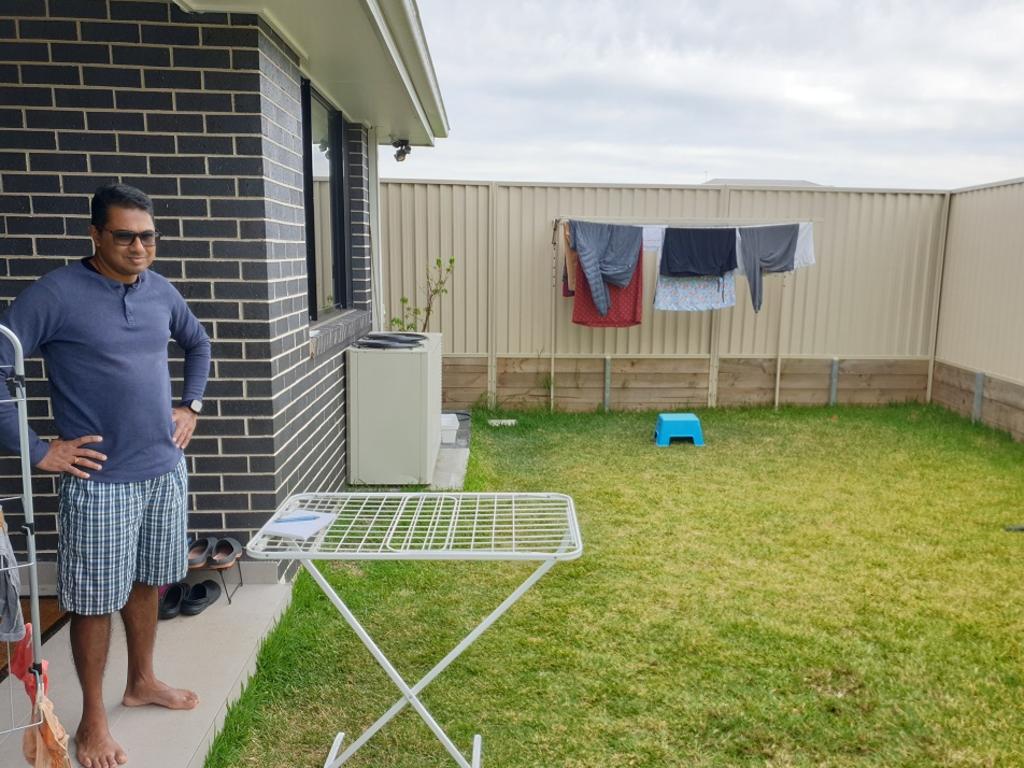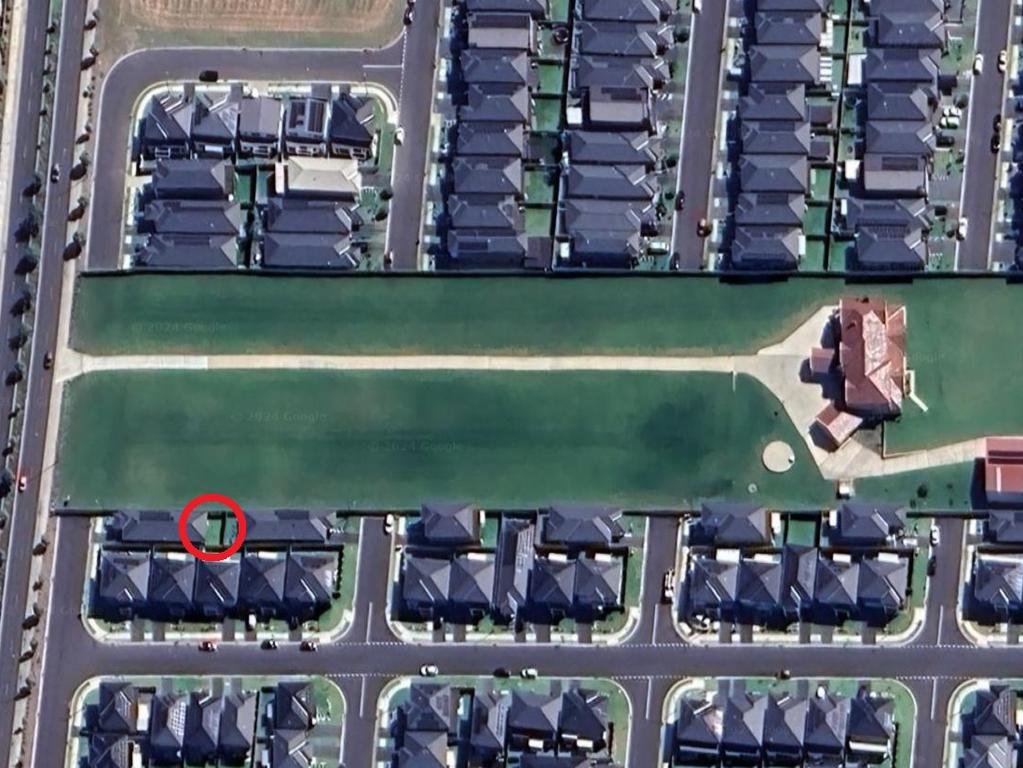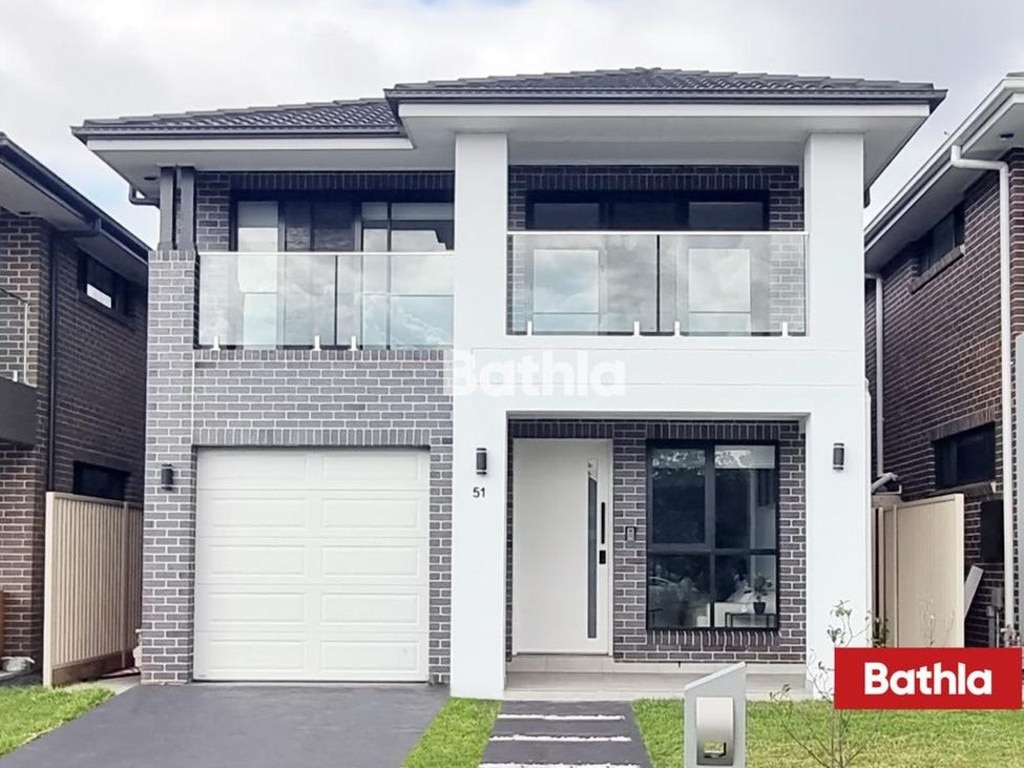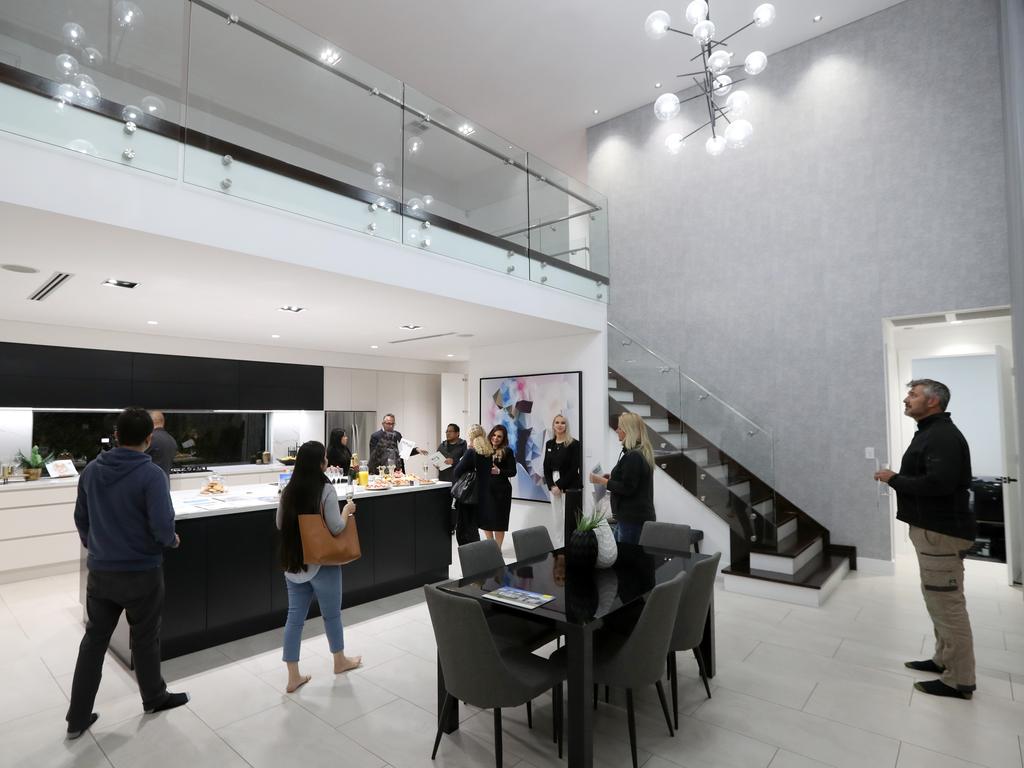‘We are happy’: Residents of cramped housing development in The Ponds hit back
Residents of a cramped new housing development in Sydney’s northwest have hit back at uproar over the “awful” sight.
EXCLUSIVE
Proud homeowners in a cramped development have hit back at the “over-reaction” after social media users expressed horror at the “awful” sight and experts lined up to condemn the building style as “irresponsible”.
An image shared to social media of a new subdivision in The Ponds, in Sydney’s northwest, quickly went viral over the weekend, sparking uproar about the types of modern homes the country is building.
New housing in The Ponds, in western #Sydney. pic.twitter.com/gNRzMjiPO3
— hidflect (@hidflect) April 20, 2024
The homes, located on the southern edge of The Ponds and developed by Sydney firm the Bathla Group, are crammed in with small setbacks and street verges, tiny backyards and black roofs and driveways.
They are mostly four-bedroom, three-bathroom properties boasting about 280 square metres of internal living space on 300 square-metre blocks.
Manohar Muralidhara, 44, lives in one of the new homes on the street pictured.


Just over his side fence is the Zammit property, a 20,000 square metre parcel of land with an enormous, perfectly manicured green lawn, which made international headlines after its defiant owners refused to sell up to developers despite an estimated $50 million price tag.
Showing off his six-metre by nine-metre backyard, the data analyst said he had “no complaints” about the size of the property.
“I think it’s a bit of an over-reaction largely,” Mr Muralidhara told news.com.au of the social media firestorm.
“I lived in a small apartment so when I moved into this obviously it was an upgrade from where I stayed, so I never felt the pinch to be honest.”


He conceded that newly built homes in rapidly growing areas like The Ponds and Riverstone were “slightly tight in terms of space”.
“It’s understandable,” he said.
“If you go to old developed areas like Quakers Hill you will find bigger plots, but that’s understandable where things are heading — more people, less land.
“I do have a decent backyard, a sizeable backyard. I don’t see a problem with it to be honest. I thought people were overreacting. Yes the houses are close, if you see these houses they are town homes, they look close, but it’s not the case everywhere.”
Mr Muralidhara added it was nice living next to the iconic Zammit holdout.
“[There’s] no one to bother us on the other side, so no complaints,” he said. “No complaints with air and lighting as well.”
Traffic noise from the busy Hambledon Road over the nature strip was the only issue, he added. “If I’m inside I’m OK, but yes if you pull up a chair here and have a beer then yes it can be a bit noisy,” he said.
“I did speak to the council to get these trees. They’ve done their best already.”

Another man several doors up laughed off the controversy.
“I moved here in December — it’s fine, yeah,” he said, adding the size of the backyard was “good” but declining to comment further.
One mum on the street, who asked not to be identified, said that people criticising the housing “don’t realise that most of the people around here are Indian”.
“Back there in India we have lived like that, houses are like that,” she said.
“So basically in India the housing is like we share the same wall. Sometimes the bricks are together, sometimes one brick [wall] is used. So for us it’s common, but in Australia it’s different. [In India] there is more population and land is less, so there is not that culture [of having backyards]. Most people they have [homes] like this.”
She added that “most of the time in India, in my generation we shared everything with the neighbours”.
“We never mind that our voice is going to their place, their voice is coming [into ours],” she said.
“But here now we are conscious that at least you have to maintain your tone, that you don’t disturb anyone.
“But we are raised in that culture, in India we consider they are like our brother and sister. If our family will take time to come from some other place, if we are in a happy situation or in a sad situation like something happened, it’s the neighbour who comes first to help you. So we always acknowledge their presence, that’s the difference — we are happy with this.”

‘Packed in like sardines’
The post on X that sparked the furore has been viewed 6.6 million times since Saturday.
“That looks awful,” one user wrote. “No front or back yards, no parks or green spaces in the neighbourhood? No pools or playgrounds? Packed in like sardines. No thank you!”
Another said, “The Ponds? More like The Pods.”
“If you sneeze out a side window, your neighbour will catch your cold,” another wrote.
Professor Sebastian Pfautsch, an urban planning and management expert at Western Sydney University, said the viral image made him “sad”.
“My area of research and advocacy is heat — the urban heat island effect of developments like these — and so I know well that the people in these suburbs are at very high risk of adverse health impacts,” Prof Pfautsch said on Monday.
“They will either have very high electricity bills from running air cons constantly to keep cool during extreme events or, if they don’t have the financial means to cool their homes, they’ll be at serious risk of illness.”
There were broader potential implications of these kinds of neighbourhoods, Prof Pfautsch said, such as adverse social and economic outcomes.
“It’s incredibly irresponsible,” he said.
“This is probably the worst possible outcome when it comes to the delivery of housing. You tend to get poorly built houses squeezed together on small parcels of land. There’s no space, few playgrounds or parks, very limited amenities nearby. You have all kinds of issues when it comes to social isolation and physical and mental health. There are few [upsides].”

Australia has some of the biggest new homes in the world, but the space they’re crammed on continues to shrink.
Analysis by the Australian Bureau of Statistics in 2022 examined floor areas and site areas in the five major capitals over a 10-year period.
The average block size shrunk by 64 square metres in the decade to 2021, a reduction of 13 per cent, while the average size of a new home only fell by just three square metres, or one per cent.
“The problem really is that most people want a detached house,” said urban planner Samuel Austin.
“But we’re running out of space for them, so there’s limited available and so land costs have skyrocketed as a result. Developers need a 10 per cent to 20 per cent profit margin, so they have to make blocks smaller.”
Speaking to The Daily Mail in 2022, Diane Zammit said the neighbourhood used to be “farmland dotted with little red brick homes and cottages”.
“Every home was unique and there was so much space — but not any more,” she said. “It’s just not the same.”
It’s estimated 50 houses could fit on the block of land if they followed the same style as other developer homes in the area.
“The fact that most people sold out years and years ago, these guys have held on, all credit to them,” Ray White Quakers Hill agent Taylor Bredin told 7News at the time.
“Depending on how far you push the development plan, you’d be able to push anywhere from 40 to 50 properties on something like this, and when subdivided, a 300 square metre block would get $1 million.”
— with Shannon Molloy
Read related topics:Sydney






